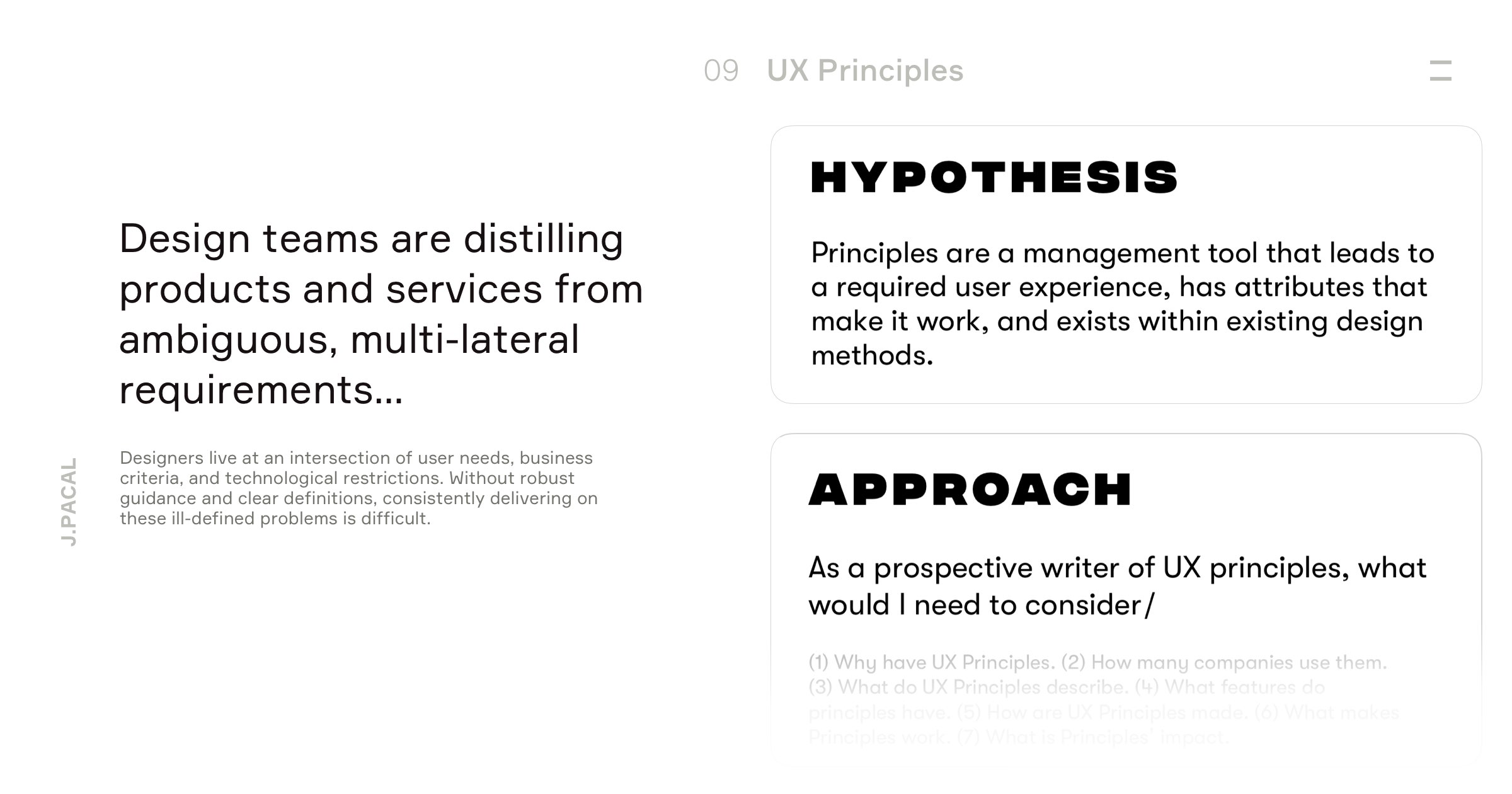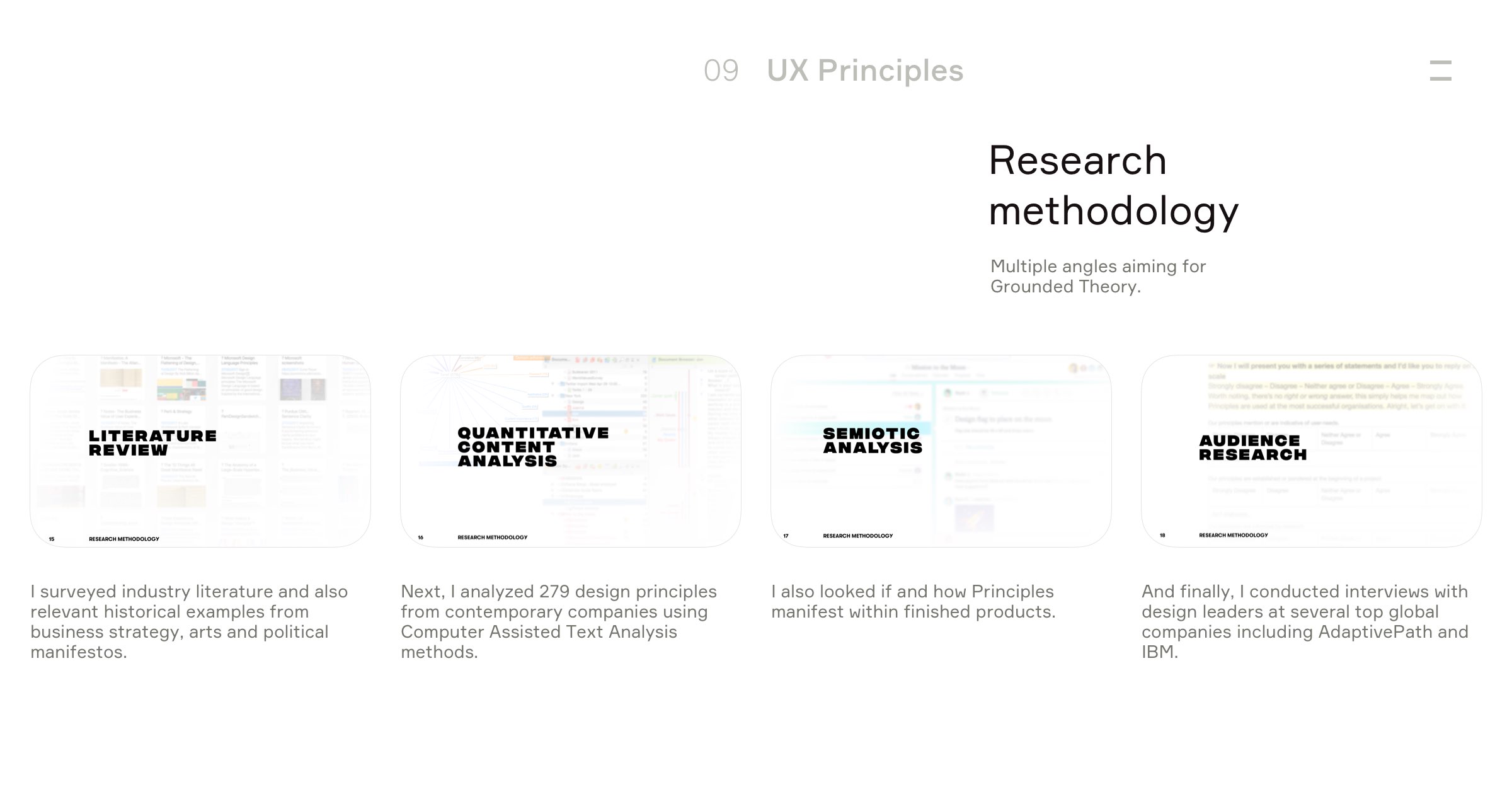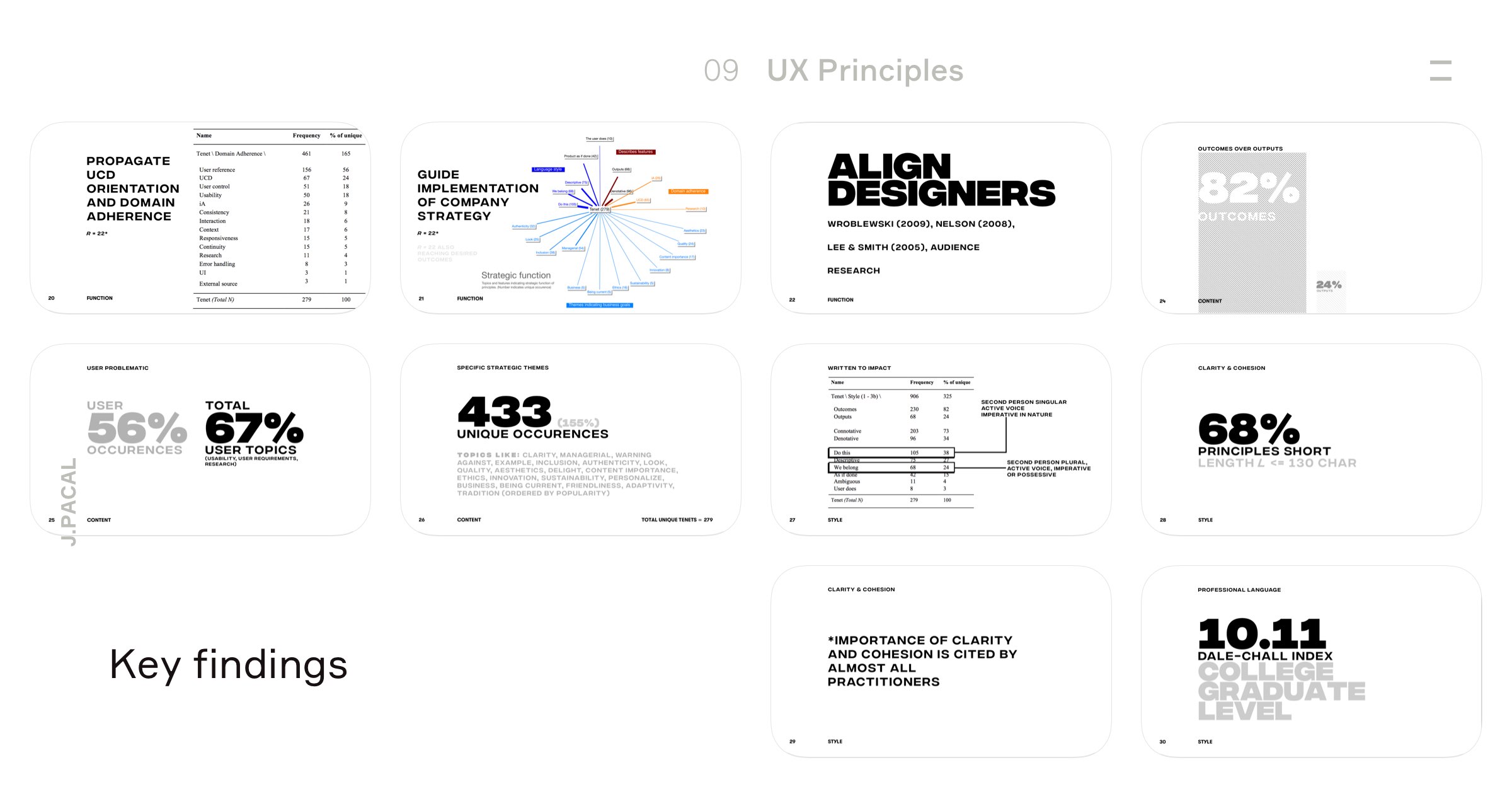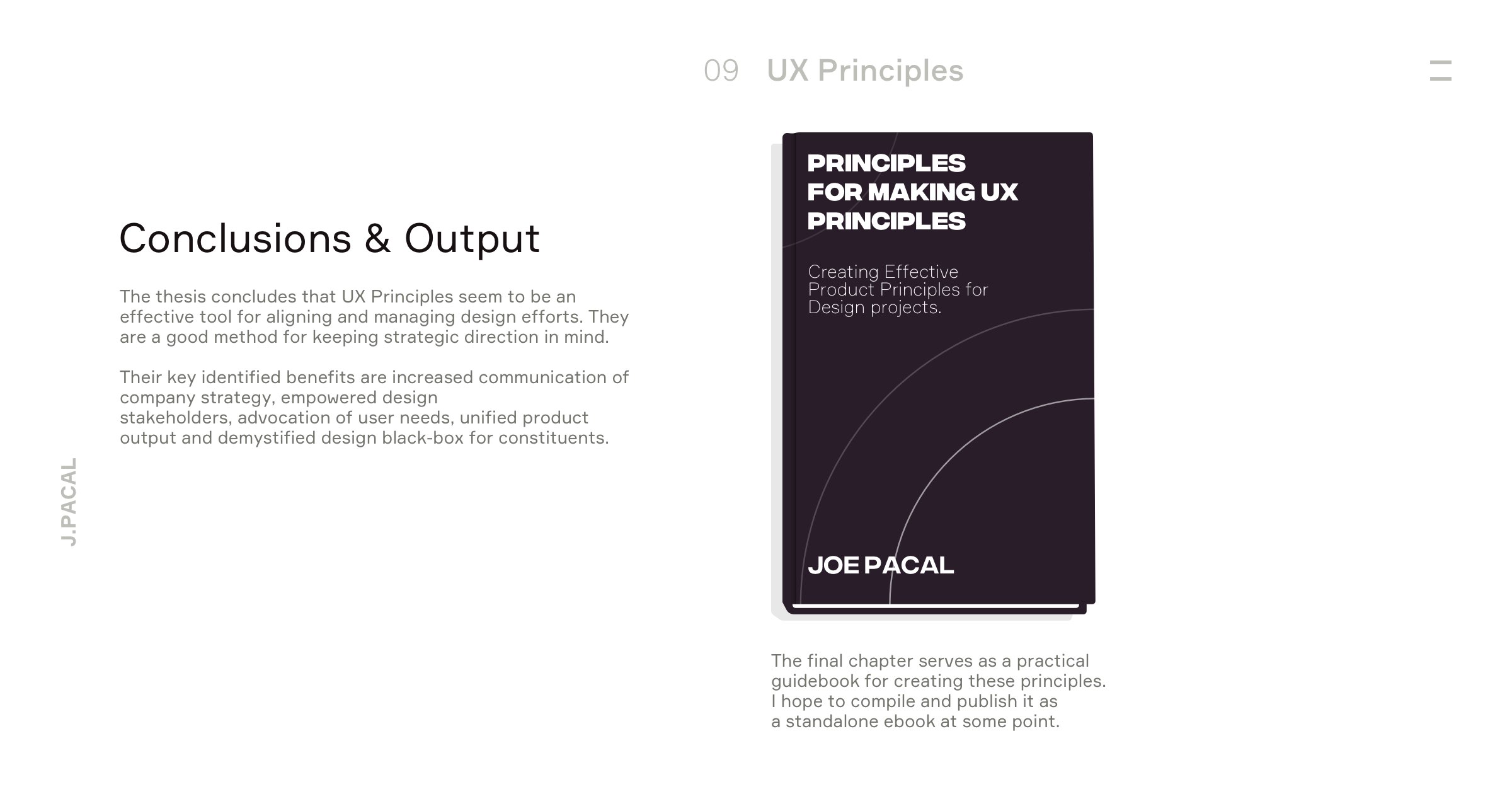
Design specialists must keep up multitudes of perspectives and requirements in their daily work. But reading endless Jira specifications often feels like tirelessly re-reading Homer’s Oddyssey.
Another challenge I faced at work. Yousician consists of highly autonomous teams, where a developer may have responsibility for UI work as well as code. I was in need of an organizational method to empower individuals in making high-quality UX decisions that aligned with our strategy and user's needs.
However, information on this topic was scattered and often conflicting, which inspired me to choose this as my thesis topic.
The 6-month research project culminated in a thorough consideration of domain knowledge, but also interviews with design experts at leading companies such as IBM, AdaptivePath, or Google.
To contribute original research, I also conducted an original semiotic analysis, and qualitative content analysis of hundreds of 'design principles' that leading teams use to manage their product efforts.

Design specialists must keep up multitudes of perspectives and requirements in their daily work. But reading endless Jira specifications often feels like tirelessly re-reading Homer’s Oddyssey.

In my research I explored a method to distill those requirements into a more actionable and palatable format that could be used on daily basis.
My follow-on goal was to find what makes these principles effective and if their traces can be found in the products they helped to create. The research consisted of four separate methods attempting to reach a Grounded Theory.


After sufficient analysis, I formulated a set of explanations and guiding steps to help design managers adopt the method of UX principles at their own company.
on academia.edu